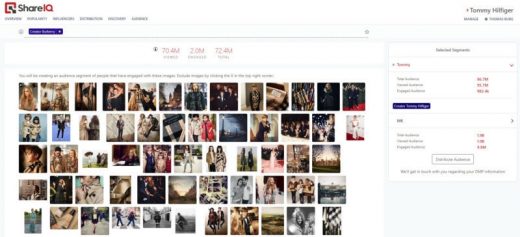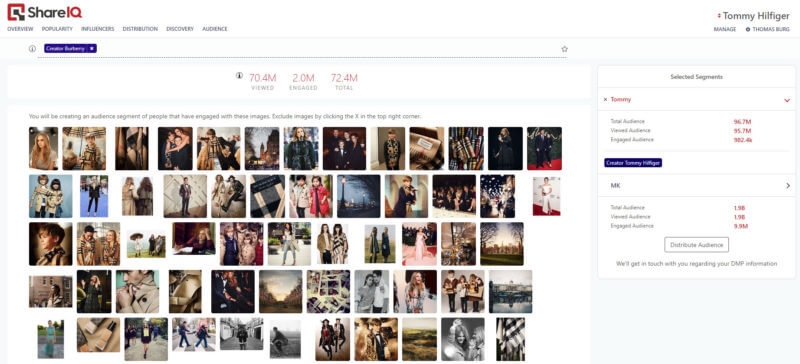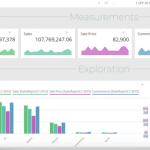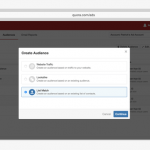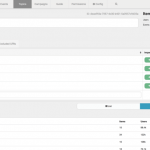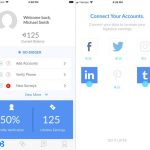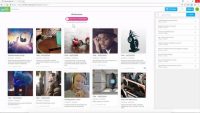ShareIQ can now generate ad-targeting segments of users who have interacted with brand images
The company says this is the first image-based segmenting, and that it can also create groups of users who have looked at competitors’ images.

For many brands, the web has become the Visual Web, where images reign as the key currency of communication.
To help brands take advantage of that visual currency, visual content performance platform ShareIQ is releasing this week a new data product called Custom Audiences to create targetable user segments based on images seen.
VP of Marketing Thomas Burg said that his company, based in New York City and Berlin, is “the first to allow you to create audiences based on people who have interacted with or viewed images.”
A brand does a keyword search of ShareIQ’s database, which contains over 850 billion images pulled from websites, blogs, social networks and other sources. Some of the images are related to ShareIQ’s brand clients — primarily in home goods, fashion, health and beauty, and entertainment — but many are not related.
The keywords have been manually added by brands to images, or they have been added by the ShareIQ platform via machine vision that sorts them into predetermined categories.
Going back as much as 2 1/2 years, the returned results show the total numbers of users who have viewed (that is, loaded) the keyword-related images, and those who have engaged with the selected images (or with competitors’ images, as long as they are in the database) by liking, posting or sharing them. The platform can then generate corresponding segments of individual users.
Segments of viewers are sent to LiveRamp to match them with anonymized profiles via a corresponding cookie or mobile ID. Segments of engaged users, who have logged in to share or like, are sent to StatSocial to get an email associated with the employed social handle, and then to LiveRamp for a more precise profile matchup.
In either case, the result is a people-based segment that is then handed off to a data management platform (DMP) for online ad targeting.
Below, a marketer has created segments of users who have viewed or engaged with images related to the Tommy Hilfiger brand and to the Michael Kors brand. In this screen, the marketer is determining if they want to create Burberry-related segments as well:
Marketing Land – Internet Marketing News, Strategies & Tips
(16)

